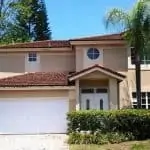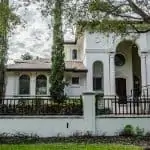Inventory increased and metro market prices rose in the first quarter of 2019, but at a slower pace than the previous quarter, according to new research.
From the first quarter of 2018 to the first quarter of 2019, home prices rose 3.9 percent, according to a National Association of REALTORS® (NAR) report. On an annual basis, there were higher home prices in 86 percent, or 153 of the 178 metropolitan areas in the report. Comparing the largest markets, the median price was $254,800, up from $245,300 in Q1 2018.
Thirteen metro areas (7 percent) experienced double-digit increases, down from 14 in 2018’s first quarter.
Lawrence Yun, NAR chief economist, says the first quarter has been beneficial to U.S. homeowners. “Homeowners in the majority of markets are continuing to enjoy price gains, albeit at a slower rate of growth. A typical homeowner accumulated $9,500 in wealth over the past year,” he said.
A look at the affordability factor: According to the report, national family median income rose to $77,752 in the first quarter, while higher home prices caused overall affordability to decrease from last year. So a buyer making a 5% down payment would need an income of $60,143 to purchase a single-family home at the national median price, while a 10% down payment would require an income of $56,978, and $50,647 would be necessary for a 20% down payment.
According to the report, existing-home sales, including single family homes and condos, increased 1.2 percent from the last quarter and 5.4 percent from the prior year. At the close of the first quarter of 2019, existing for-sale inventory totaled 1.64 million—2.4 percent higher than the prior year. During the first quarter, the average supply was 3.8 months—up from 3.5 months in the first quarter of 2018.
Regional Breakdown
Northeast
Q1 Existing-Home Sales: -1.0% YoY
Q1 Median Price: $277,200 (+3.7% YoY)
Midwest
Q1 Existing-Home Sales: -5.5% YoY
Q1 Media Price: $194,100 (+3.9% YoY)
South
Q1 Existing-Home Sales: -4.0% YoY
Q1 Median Price: $225,700 (+2.5% YoY)
West
Q1 Existing-Home Sales: -10.7% YoY
Q1 Media Price: $384,300 (+3.5% YoY)
According to the report, the most expensive markets were:
– San Jose-Sunnyvale-Santa Clara, Calif. – $1.22 million
– San Francisco-Oakland-Hayward, Calif. – $930,000
– Anaheim-Santa Ana-Irvine, Calif. – $800,000
– Urban Honolulu, Hawaii – $794,100
– San Diego-Carlsbad, Calif. – $620,000.
The least expensive were:
– Decatur, Ill. – $80,800
– Youngstown-Warren-Boardman, Ohio – $89,200
– Elmira, N.Y. – $90,400
– Cumberland, Md. – $99,300
– Binghamton, N.Y. – $107,200.
“There are vast home price differences among metro markets,” Yun says. “The condition of extremely high home prices may not be sustainable in light of many alternative metro markets that are much more affordable. Therefore, a shift in job search and residential relocations into more affordable regions of the country is likely in the future.”
Yun continues to call on the construction industry to develop more affordable housing units, which he says will combat slower price gains and buyer pullback. “More supply is needed to provide better homeownership opportunities, taming home price growth and widening the inventory choices for consumers. Housing Opportunity Zones could provide the necessary financial benefits for homebuilders to construct moderately priced-homes,” Yun said.
@RIS Media




